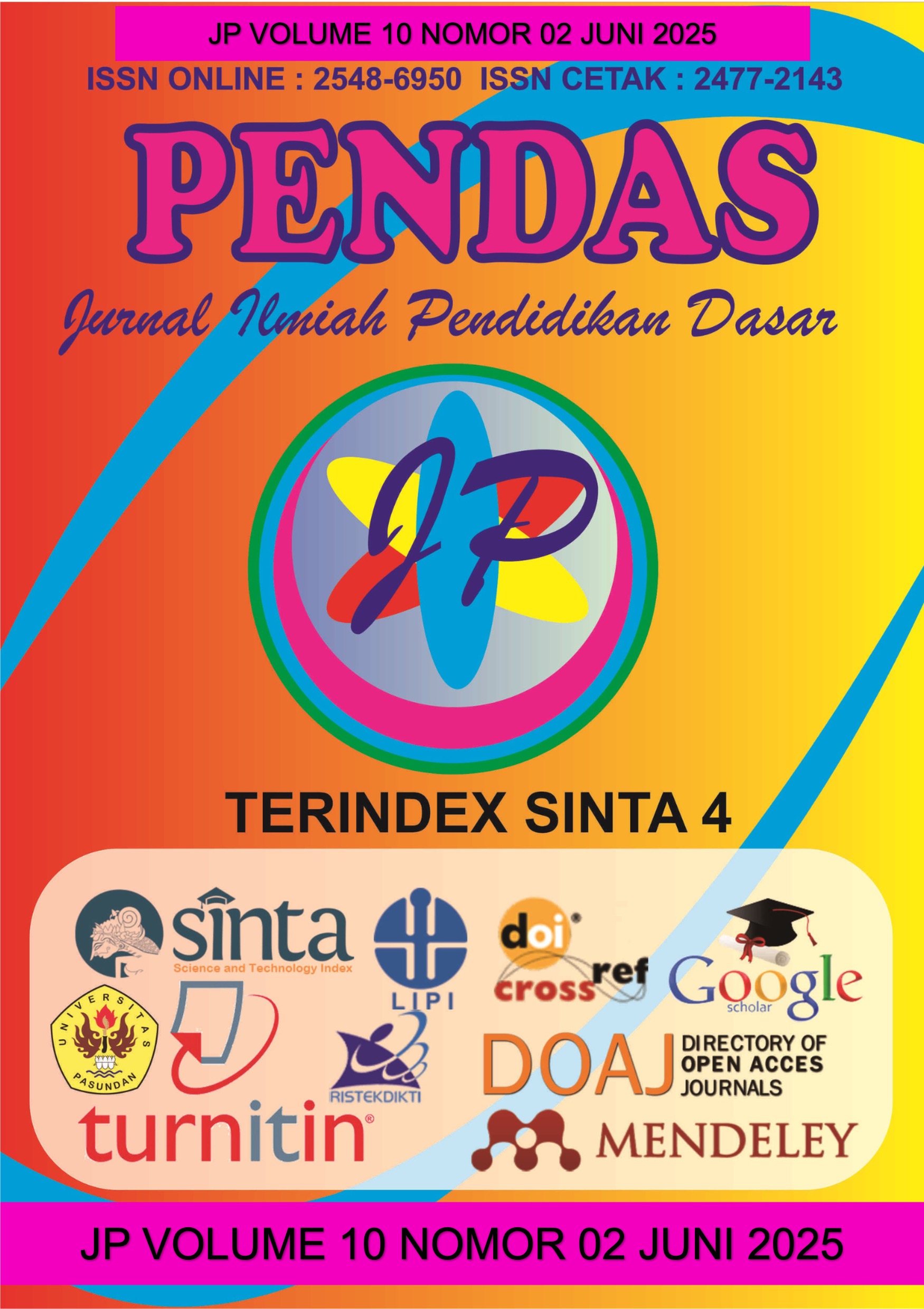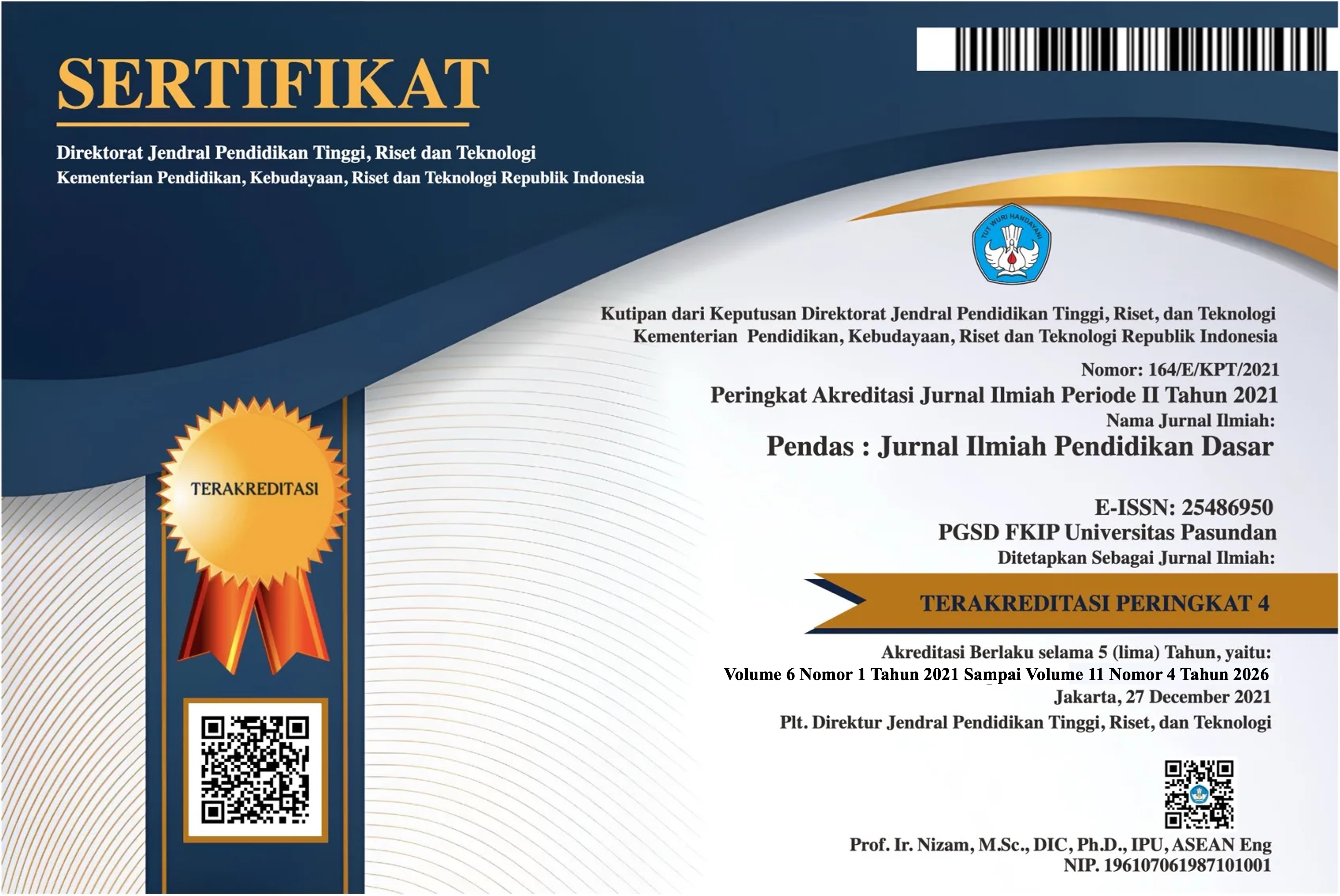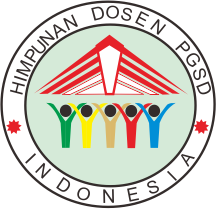EFEKTIVITAS PENGGUNAAN BAHAN AJAR BUKU BERGAMBAR BERBASIS BUDAYA LOKAL DALAM PEMBELAJARAN IPS DI SEKOLAH DASAR
DOI:
https://doi.org/10.23969/jp.v10i02.27139Keywords:
Teaching Materials, Illustrated Books, Local Culture, Social Studies, Elementary SchoolAbstract
This study aims to examine the effectiveness of using culturally-based illustrated textbooks in Social Studies (IPS) learning at the elementary school level. The research employed the Research and Development (R&D) method using the ADDIE development model, which includes five stages: Analysis, Design, Development, Implementation, and Evaluation. The teaching material was developed by integrating elements of local culture into illustrated books, tailored to the characteristics of elementary school students who are in the concrete operational stage. A limited trial was conducted with fourth-grade students at an elementary school in Kerinci. The evaluation results indicate that the developed teaching material is effective in increasing learning interest, conceptual understanding of Social Studies, and students’ appreciation for local culture. The findings show that more than 89% of respondents agreed that the illustrated video media supports the learning process. Furthermore, 97% stated that the media was effective in explaining practicum material, and 94.1% of teachers reported that the media encouraged students' motivation to learn at home. However, 18.5% of teachers considered the media to be less optimal in instilling character values, and 23.5% noted that parental involvement still needs to be improved. In addition, this learning media was able to create a more interactive and contextual learning atmosphere. These findings suggest that the integration of local culture into teaching materials can strengthen student character while enhancing the quality of Social Studies learning at the elementary level.
Downloads
References
MetaCommunication; I DO
SOMETHING INDONESIA
UNTUK MENGUBAH. Journal Of
Communication Studies
KAMPANYE
#THINKBEFOREYOUSHARE
OLEH ORGANISMS PERILAKU
GENERASI MILLENNIAL. Jurnal
Ilmu Komunikasi, 4(1), 65–94.
Hamalik, O. (2011). Proses belajar
mengajar. Bumi Aksara.
Koentjaraningrat. (1992). Beberapa
Pokok Antropologi Budaya. UI
Press.
Muhaimin. (2014). Strategi
pembelajaran IPS SD berbasis
kearifan lokal. Pusat Belajar.
Pinasti, D. A., & Kustanti, E. R.
(2018). HUBUNGAN ANTARA
EMPATI DENGAN ADIKSI
SMARTPHONE PADA
MAHASISWA FAKULTAS ILMU
BUDAYA DAN FAKULTAS
SAINS DAN MATEMATIKA
UNIVERSITAS DIPONEGORO
SEMARANG. Jurnal EMPATI,
6(3), 183–188.
https://doi.org/https://doi.org/10.1
4710/empati.2017.19747
Sardiman, A. M. (2012). Interaksi dan
motivasi belajar mengajar.
Rajawali Pers.
Slavin, E. R. (2005). Cooperative
Learning Teori, Riset dan
Praktik. Terjemahan Narulita
Yusron 2010. Nusa Media.
Slavin, R. E. (2009). Cooperative
Learning: Theory, Research, and
Practice. Allyn & Bacon.
Sutisna, M. R., Mulyadi, D., &
Alinawati, M. (2019). Flipped
Classroom Application and
Improvement of Motivation and
Downloads
Published
Issue
Section
License
Copyright (c) 2025 Pendas : Jurnal Ilmiah Pendidikan Dasar

This work is licensed under a Creative Commons Attribution 4.0 International License.



















